As an Amazon Associate, I earn from qualifying purchases with no additional costs for you.
While it’s true that Delaware is a small state, it’s certainly not lacking in valuable rocks and minerals. Prepare yourself for the rocks or minerals you might find in the First State with this rockhounding guide.
From its sandy beaches to its forested parks, Delaware’s most common rocks and minerals are:
- marble,
- schist,
- quartzite,
- serpentine,
- gneiss,
- sillimanite,
- garnet,
- quartz,
- feldspar,
- and mica.
Every rockhound knows that a little preparation can go a long way. With this guide to the common rocks and minerals you can find in Delaware, you’ll know exactly what to look for and where to find them in the First State.
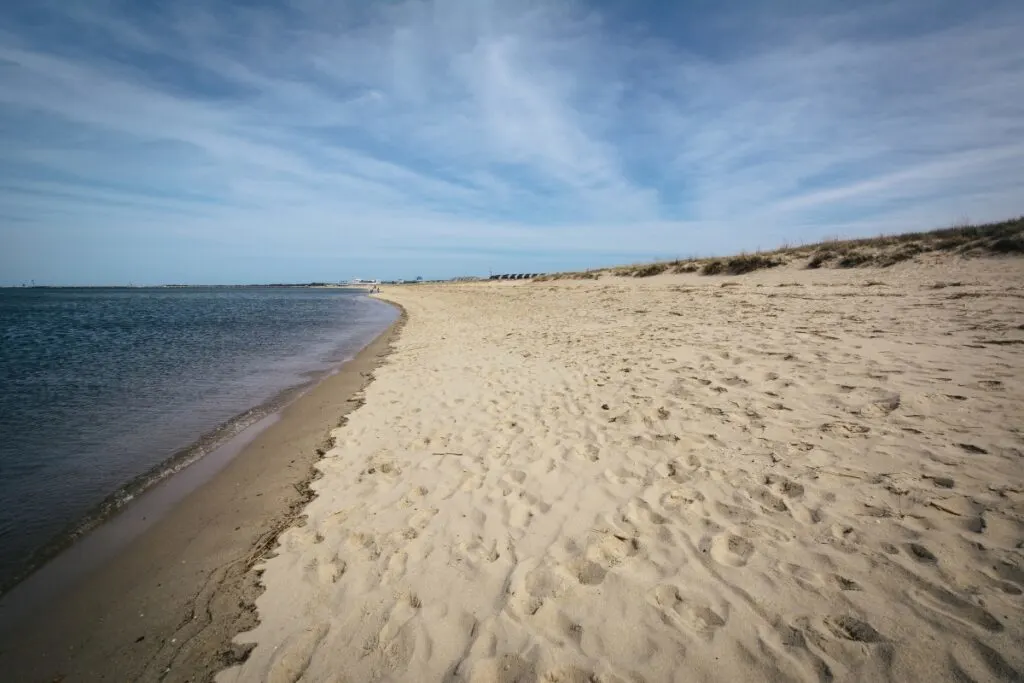
If you are interested in checking out the best rockhounding tools you can find them by clicking here (Amazon link).
What Rocks Are Found in Delaware
From marble to serpentine, there are many types of fascinating rocks that exist in Delaware, such as:
Marble
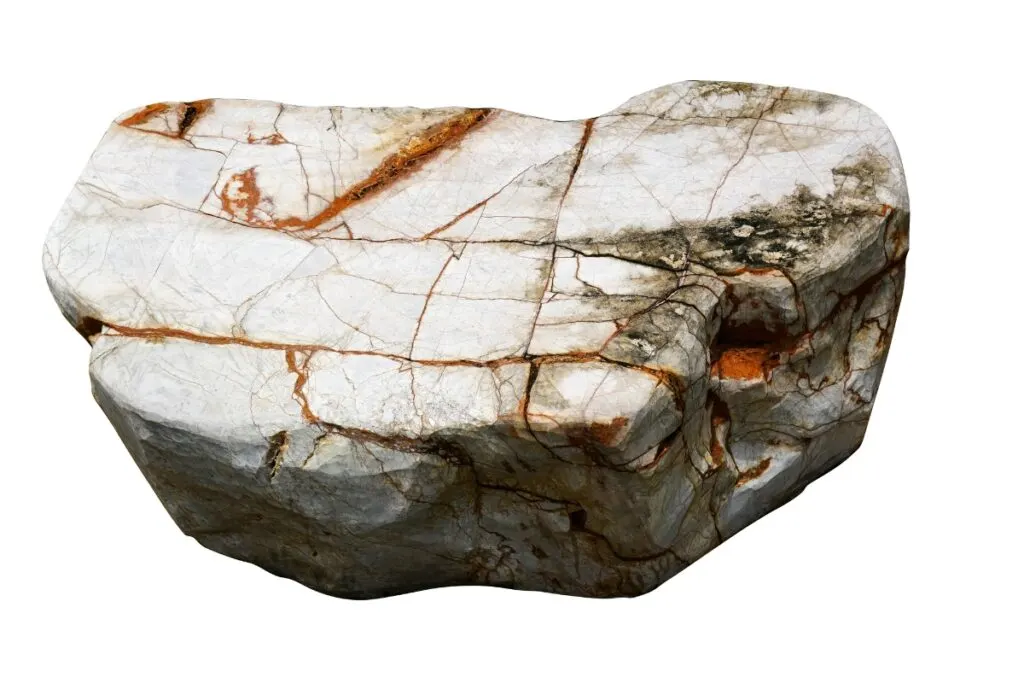
| Location | GPS Coordinates |
|---|---|
| Delaware Bay | 39.327425, -75.469854 |
| Cape Henlopen | 38.803234, -75.095741 |
| Nanticoke River | 38.758818, -75.587520 |
| Leipsic River | 39.247119, -75.498507 |
| Hoopes Reservoir | 39.778819, -75.628444 |
| Red Clay Valley | 39.772656, -75.589666 |
| Pepper Creek | 38.529324, -75.265234 |
Any rockhound who’s interested in collecting pure, blue-white marble should stop by Delaware. In the First State, you’ll often find blue-white, coarsely crystalline marble that’s intertwined with calc-schist.
This type of marble is referred to as Cockeysville Marble, and the main minerals that make up this marble are dolomite, calcite, graphite, diopside, olivine, and phlogopite.
While you can look for marble almost anywhere in Delaware, it’s best to check out the riverbeds, mines, and stone quarries. Look near Cape Henlopen State Park or the Nanticoke River for some unique blue-white pieces of marble to bring home.
Schist

| Location | GPS Coordinates |
|---|---|
| Chestnut Hill | 39.650844, -75.771178 |
| Red Clay Valley | 39.772656, -75.589666 |
| Little Creek | 39.157508, -75.448417 |
| Brandywine Creek | 39.734763, -75.527448 |
| Christina River | 39.721792, -75.522212 |
| Indian River | 38.592234, -75.136012 |
| Coursey Pond | 38.988328, -75.520960 |
Since schist is one of the most common metamorphic rocks, it’s no surprise that you can find plenty of it in Delaware. In the First State, mica schist is the most common type of schist found by rockhounds, and it’s known for its attractive whitish-gold shimmer.
Occasionally, people discover garnets and sillimanite embedded in schist, so keep an eye out for the various minerals that can be hidden in this metamorphic rock.
You can find schist almost anywhere in Delaware, especially near riverbeds, creeks, and other waterways. You can also check out the beaches and bays to find this shiny rock for your collection.
TIP: The classification of rocks is indeed crucial in order to organize the vast amount of information about rocks. Check out the complete guide in the article below:
How to Guide: Classification of Rocks by PRO Geologist
Quartzite
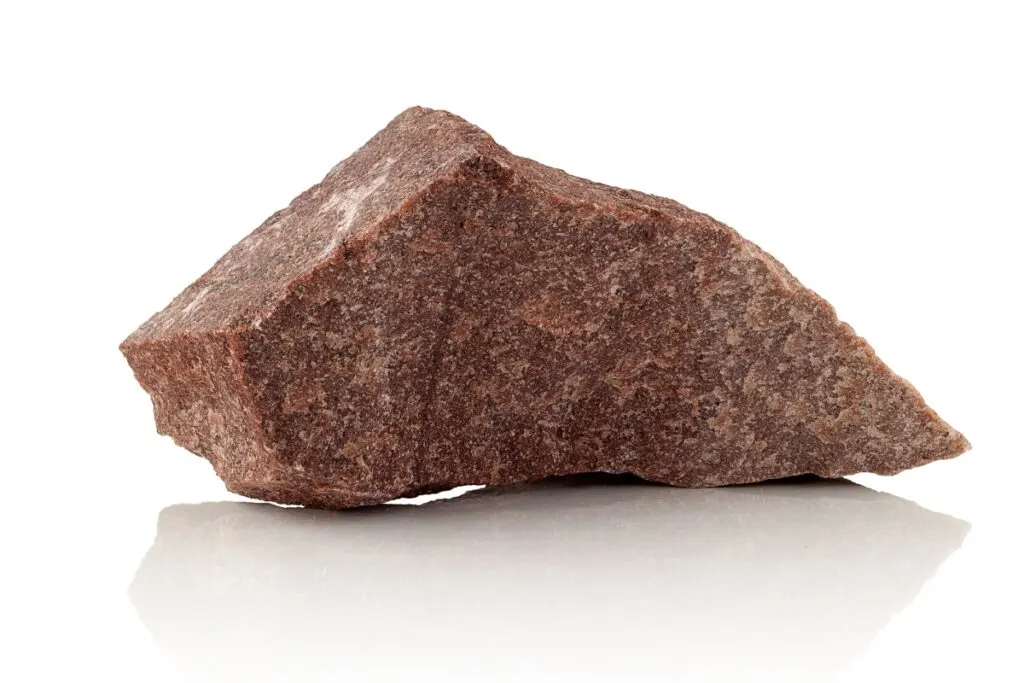
| Location | GPS Coordinates |
|---|---|
| Kilen Pond | 38.980447, -75.535287 |
| Fowler Beach | 38.880300, -75.269813 |
| Chesapeake and Delaware Canal | 39.558454, -75.589809 |
| Pepper Creek | 38.529324, -75.265234 |
| Cape Henlopen | 38.803234, -75.095741 |
| Dagsboro | 38.547209, -75.251962 |
Delaware is a great state to visit if you want to collect multiple types of quartzite at once. Some types of quartzite you might come across in the First State are Antietam Quartzite, Hardyston Quartzite, Magothy Quartzite, and Wissahickon Quartzite.
The color and texture of quartzite in Delaware will vary depending on where you go and what type of quartzite you find, but the most common colors you’ll come across are white, grey, pink, tan, brown, and light blue.
Some pieces of Delaware quartzite contain a mineral called fuchsite, which gives the quartzite a lovely green hue.
If you are on the hunt for quartzite, some of the best sites to visit in Delaware are Cape Henlopen, Kilen Pond, and Pepper Creek.
Recommendation box: All tools and equipment you need for rockhounding and rock identification* (Amazon links):
1. Estwing Rock Hammer – Light, comfortable, and extremely durable hammer.
2. Estwing Geologist Pick – Classic and the most trusted paleo pick in the world.
3. Finder 12-inch Chisels – Heavy-duty chisels set with hand protection.
4. Mini Handle Shovel – This is a great tool for digging deep in the dirt.
5 Ironclad Utility Work Gloves – Breathable, but they also protect the areas requiring them most.
6. 3M Safety Glasses – Comfortable and efficient goggles for rockhounding.
7. Convoy 8+ UV Light – 365nm UV LED flashlight with a patented glass filter.
8. Wesley’s Jewelers Loupe – High magnification options (30X and 60X) with carrying case.
9. Mohs Hardness Kit – A specially designed kit for rockhounds
*All recommended products are personally tested and regularly used by experts from this website.
Serpentine
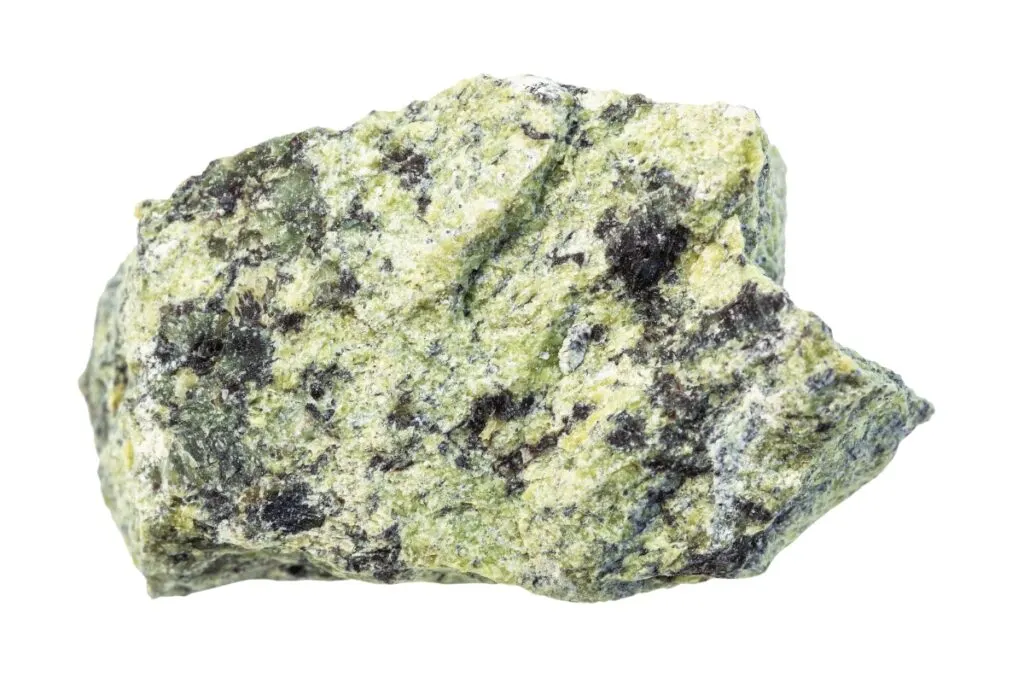
| Location | GPS Coordinates |
|---|---|
| Mount Cuba | 39.789322, -75.642785 |
| Red Clay Valley | 39.772656, -75.589666 |
| New Castle County | 39.545358, -75.697580 |
| Rehoboth Beach | 38.725728, -75.077210 |
| Fowler Beach | 38.881824, -75.271427 |
| Broadkill Beach | 38.824685, -75.207961 |
Although serpentine exists all over the First State, rockhounds usually find it along the beaches or serpentine barrens, which are large outcrops of this rock.
The serpentine stones in Delaware are a dark to light greenish-yellow, and their workability makes them well-suited for carving.
If you plan to visit Delaware’s beaches, keep an eye out for serpentine along Rehoboth Beach and Folwer Beach. Some other popular places to find serpentine in this state are Mount Cuba and Red Clay Valley.
Gneiss

| Location | GPS Coordinates |
|---|---|
| Brandywine Creek | 39.779734, -75.571254 |
| Wilmington | 39.754163, -75.549059 |
| Alapocas Woods | 39.775432, -75.564428 |
| Chestnut Run | 39.754470, -75.600405 |
| Christina River | 39.729627, -75.559771 |
| Delaware River | 39.596161, -75.614371 |
It’s true that gneiss can come in many colors, but it’s not every day you find some Brandywine Blue Gneiss, which is known for its bright blue to blueish-grey hue.
Delaware’s Brandywine Blue Gneiss, also known as Wilmington Blue Gneiss, is over 500 million years old, and its smokey-blue color is sure to catch any rockhound’s eye.
As you may have guessed, this rock is found near Brandywine Creek and the City of Wilmington. The majority of the outcrops are on the northeast side of Brandywine Creek, so it’s best to start your search there before scouring other areas of the city.
TIP: Geology and geography are very closely related sciences as they both study the same object – the planet Earth. Check out the differences between geology and geography in the article below:
Major Similarities & Differences Between Geology & Geography
What Minerals Are Found in Delaware
From shiny sillimanite to rosy garnets, there are many minerals just waiting to be found in Delaware, including:
Sillimanite
| Location | GPS Coordinates |
|---|---|
| Hoops Reservoir | 39.780667, -75.632178 |
| Brandywine Springs (surrounding areas) | 39.743053, -75.641703 |
| Wilmington | 39.754163, -75.549059 |
| White Clay Creek | 39.699229, -75.620284 |
| Hockessin | 39.786392, -75.699948 |
| Dagsboro | 38.548753, -75.244022 |
| Pepper Creek | 38.529324, -75.265234 |
It’s no surprise that you can collect plenty of sillimanite during your travels in the First State, especially since it’s Delaware’s state mineral.
Sillimanite is an aluminosilicate mineral that appears clear to grey-blue in color. In Delaware, this mineral occurs in thin veins or nodules with a glassy or shiny appearance.
No matter where you go in Delaware, you should have no problem collecting sillimanite since it’s so abundant.
With that being said, there are certain areas that are known for their large amounts of sillimanite, such as Hoops Reservoir and Brandywine Springs.
BTW: Do you want to know more about rock and mineral identification? The books listed below are the best ones you can find on the internet (Amazon links):
- Smithsonian Handbooks: Rocks & Minerals
- Gemstone & Crystal Properties (Quick Study Home)
- Ultimate Explorer Field Guide: Rocks and Minerals (National Geographic Kids)
Garnet
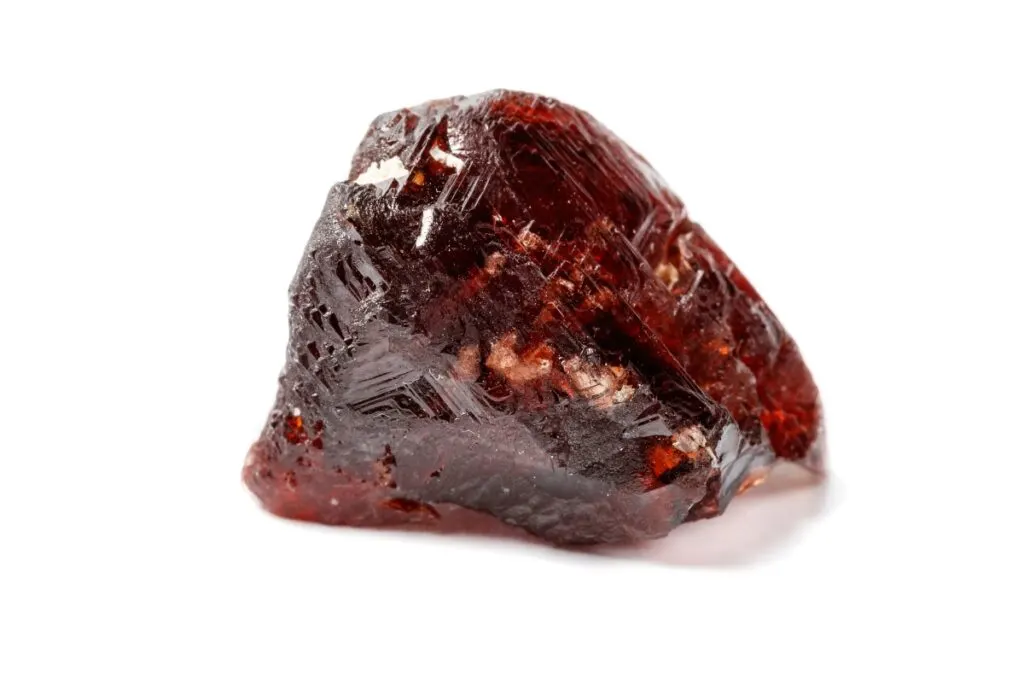
| Location | GPS Coordinates |
|---|---|
| Sussex County Fields | 38.582785, -75.647434 |
| Red Clay Creek | 39.709470, -75.645505 |
| New Castle County | 39.545358, -75.697580 |
| Woodlawn Quarry (surrounding areas) | 39.832805, -75.569996 |
| Chestnut Hill | 39.650580, -75.770534 |
| White Clay Creek | 39.699229, -75.620284 |
If you come across a shiny, red mineral in Delaware, there’s a high chance that it’s garnet. Piedmont garnets are common in this state, and they are famous for their 12-sided crystals that vary in size.
These garnets are almandine garnets, so they are typically dark red in color. Unfortunately, many of the garnets found in Delaware are small or fractured, so they aren’t used for jewelry. However, they can be used as an abrasive, and larger specimens make great additions to a collection.
When searching for garnets in Delaware, rockhounds start with areas that are free to access, such as White Clay Creek or Red Clay Creek.
If you don’t have any luck in those areas, you can search around the quarries, but since most quarries do not allow visitors, you will usually need to look in the surrounding areas and not the quarry itself.
Quartz
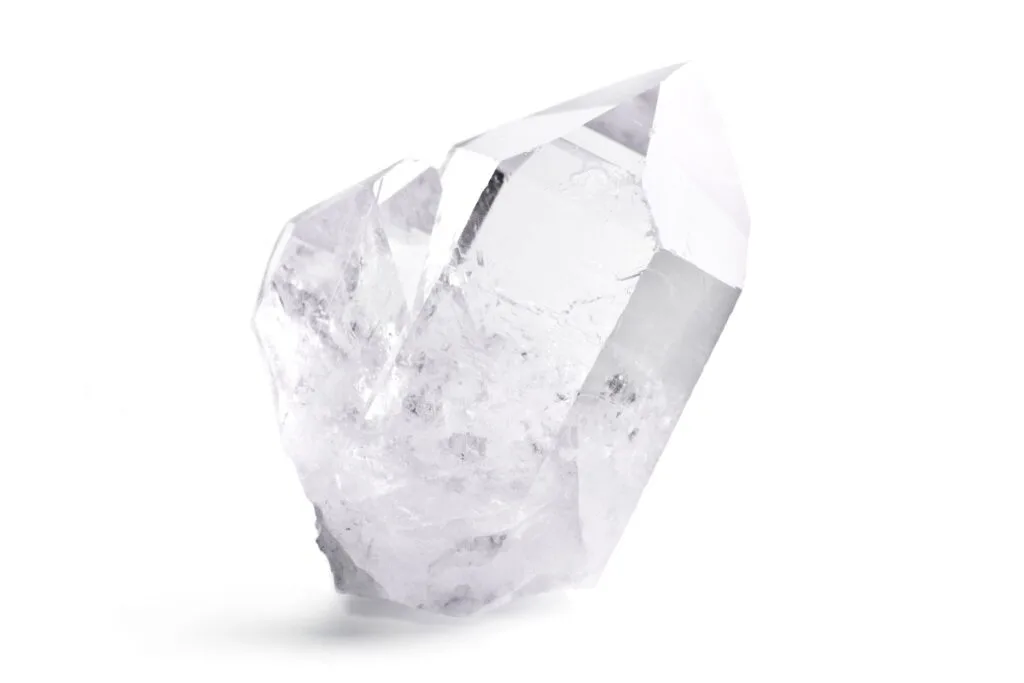
| Location | GPS Coordinates |
|---|---|
| Cape Henlopen | 38.803234, -75.095741 |
| Deauville Beach | 38.725661, -75.077725 |
| Fowler Beach | 38.881256, -75.270912 |
| Woodlawn Quarry (outside or surrounding areas) | 39.832805, -75.569996 |
| Red Clay Valley | 39.772656, -75.589666 |
| Delaware Seashore State Park | 38.612564, -75.071852 |
| White Clay Creek | 39.699229, -75.620284 |
Have you ever heard of Cape May Diamonds? Even though these illustrious stones are composed of quartz and not diamond, they do possess a similar sparkle and beauty.
Most of the time, rockhounds visit Cape May Point in New Jersey for these glittering treasures, but you can also pick them up on the Delaware beaches.
If you aren’t able to collect any Cape May Diamonds, don’t worry! There are plenty of other quartz crystals scattered across Delaware, and they exist at almost every rockhounding site in the state.
To acquire Cape May Diamonds for your collection, Cape Henlopen is your best option. However, you can check out some of Delaware’s other beaches as well, including Deauville Beach and Fowler Beach.
TIP: There are numerous fake quartz crystals you can come across in the market, even if quartz is the most widespread mineral. Find out more in the article below:
Real vs. Fake Quartz: Focus on These 12 Key Differences
Feldspar
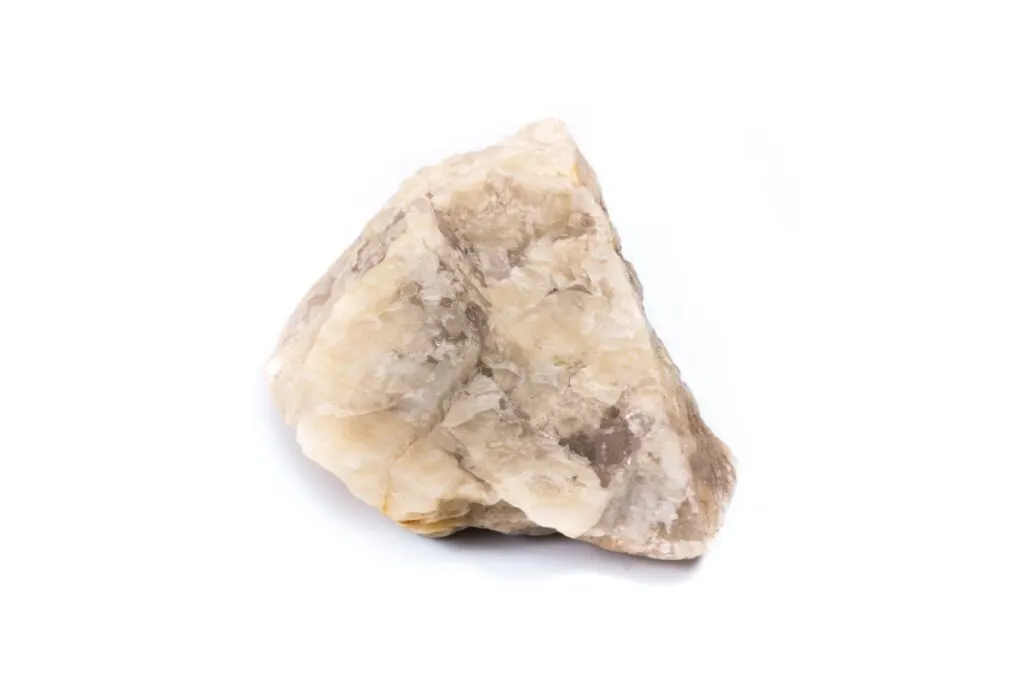
| Location | GPS Coordinates |
|---|---|
| Red Clay Valley | 39.772656, -75.589666 |
| Brandywine Springs (surrounding areas) | 39.743053, -75.641703 |
| Woodlawn Quarry (surrounding areas) | 39.832805, -75.569996 |
| Delaware River | 39.596161, -75.614371 |
| Chesapeake and Delaware Canal | 39.558454, -75.589809 |
| New Castle County | 39.545358, -75.697580 |
During the 18th and 19th centuries, businesses quarried felspar from various areas in Delaware, mainly Red Clay Valley. Feldspar from Delaware is typically glassy and transparent, and it’s an important component in porcelain and glazes.
Rockhounds who search near the Delaware Piedmont will either find orthoclase or plagioclase, which are two types of feldspar. Orthoclase is yellowish green in color, while plagioclase appears white in color and is typically more common in Delaware.
While rockhounding in Delaware, the first place rockhounds look for feldspar is Red Clay Valley, which makes sense since it was quarried regularly from that area in the past. If you aren’t able to stop by Red Clay Valley, you can visit the areas near the Woodlawn Quarry.
Mica

| Location | GPS Coordinates |
|---|---|
| Woodlawn Quarry (surrounding areas) | 39.743053, -75.641703 |
| Pepper Creek | 38.529324, -75.265234 |
| Brandywine Springs (surrounding areas) | 39.743053, -75.641703 |
| New Castle County | 39.545358, -75.697580 |
| Laurel | 38.530139, -75.576620 |
| Beaver Valley | 39.838675, -75.564612 |
As you explore Delaware, you are almost certain to find mica, a shimmery mineral that comes in many varieties. The varieties of mica that are common in Delaware include white muscovite, black biotite, green chlorite, and bronze phlogopite.
Mica was so common in Delaware that organizations began mining it from Brandywine Valley in the mid-1700s. In Brandywine Valley near Ramsey Road, you can visit an old Delaware mica mining pit, which was active from 1850-1910.
Except for the gneisses at Wilmington Complex, rockhounds are able to obtain mica from almost every area in Delaware. When you go on your rockhounding adventures, be sure to check out Laurel and New Castle County for high-quality mica.
TIP: Though mica rocks and crystals form in various environments and worldwide, that doesn’t mean they are easy to find. Check out the best spots in the USA in the article below:
Where to Find Mica: Best Environments & Locations (USA)
FAQ About Common Rocks & Minerals in Delaware
Before you journey to the beaches and hills of the First State, take some time to look over these FAQs about the common rocks and minerals you might find along the way.
What Rare Rocks Can You Find in Delaware
Although Delaware does have a couple of rare rocks, including serpentine and Brandywine Blue Gneiss, it’s mostly known for its fossils.
Fossils are rocks that take the shapes of organisms that have perished long ago, and fortunately for rockhounds, Delaware is full of these ancient treasures.
In the First State, some popular fossils are belemnite fossils, Miocene fossils, and Pleistocene Epoch fossils. The belemnite is Delaware’s state fossil, and it’s an extinct, pencil-shaped mollusk that was closely related to squids.
As you would expect, Miocene fossils are from the Miocene age, which occurred 23.03 to 5.3 million years ago, and the Pleistocene Epoch fossils are from the Pleistocene era, which occurred 2.58 million to 11,700 years ago.
Some Miocene fossils that you might find in Delaware are of small insects, arthropods, and even large vertebrates such as sharks. While Pleistocene fossils are usually of marine life, rockhounds occasionally find fossils of plants from this era.
Fortunately, Delaware is a small state, so rockhounds usually find multiple rare rocks together in a single area. For example, if you want to find serpentine and Brandywine Blue Gneiss, visit Brandywine Springs.
For belemnite, Miocene, and Pleistocene fossils, search near Killen Pond or the Chesapeake and Delaware Canal.
What Rare Minerals Can You Find in Delaware
There are two rare minerals that Delaware is known for garnet and sillimanite. Delaware is one of the few states in the U.S. that possesses Piedmont garnets, known for their 12-sided crystals and rich red color.
Sillimanite is an aluminum-based mineral that’s the state mineral of Delaware, and it ranges in color from clear to grayish-white. Occasionally, it displays a fibrous form with a silk-like sheen, or it can come in glassy crystals.
Although New Castle, Sussex, and a few other areas around Delaware claim to have gold, it is in very small amounts.
With that being said, there’s still a possibility that you might find some gold in Delaware, and the best places to look would be Red Clay Valley or the various rivers that run through the state.
Even though the chances of finding large amounts of natural gold are low, maybe you will be the one to find Delaware’s treasure chests of gold that residents abandoned hundreds of years ago.
As mentioned above, the best place to hunt for gold is Red Clay Valley, and it’s also a great place to look for garnets and sillimanite. You can also look near Cape Henlopen and Fowler Beach for these minerals, and you might even come across vibrant sea glass in these areas.
TIP: If you want to know more about gold prospecting in Delaware, check out the complete guide in the article below:
Gold Prospecting in Delaware: 3 Best Locations & Laws
What is the Most Famous Rock or Mineral Found in Delaware
It makes sense that Delaware’s state mineral, sillimanite, is the most famous mineral found in this state.
Sillimanite can come in a few different colors, including white, tan, and even green, and it’s widespread in the metamorphic rocks of the Delaware Piedmont. Fibrolite is a common type of sillimanite that exists all over Delaware, and it looks similar to fibers that have been twisted together.
Any rockhound who wants to collect sillimanite for lapidary work or their own collection should plan a trip to Hoopes Reservoir and Brandywine Springs, two locations that are known for their deposits of this mineral.
BTW: If you are looking for the best UV light for rockhounding, find out my picks below (Amazon links):
- BEST OPTION: Convoy 8+ 365nm UV LED Flashlight with Patented Glass Filter
- BUDGET OPTION: Karrong Rechargeable 1200 Lumen 395nm UV Flashlight
- OPTION FOR INDOOR USAGE: Prime Upgraded Big Chip 396nm UV
Conclusion
Delaware, a state known for its rich history and beautiful beaches, has much more to offer rockhounds than you might expect.
Sea glass, garnets, sillimanite, Cape May Diamonds, and more exist along the beaches and riverbanks of this state, and rockhounds often discover multiple minerals in a single location.
Even though Delaware isn’t one of the largest U.S. states, it has more than enough rocks and minerals to capture the interest of any rockhound.
Whether you visit the beaches or the hills of the Delaware Piedmont, keep an eye out for all these fascinating rocks and minerals you can find along the way!
TIP: Rockhounding in Delaware has its rewards if you know where to look for it. Check out the complete guide on rockhounding in Delaware in the article below:
GUIDE: Best Rockhounding in Delaware & What Rocks To Find
